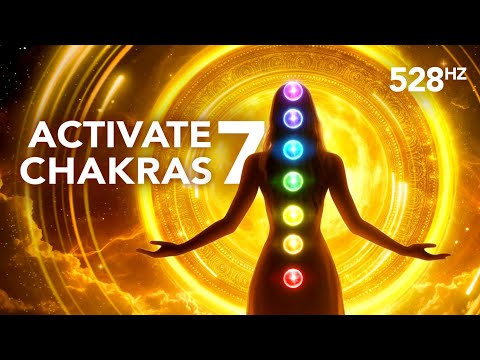As a dancer, you know that every movement and every step requires precision, control, and energy. But have you ever considered the impact that relaxation can have on your performance?
Relaxation is important for a dancer as it helps to release tension in the body, promote better alignment, and improve overall performance. It allows dancers to move more freely, with a greater range of motion and fluidity. Relaxation also helps to prevent injuries by reducing muscle tension and fatigue. Additionally, it can enhance mental focus and concentration, allowing dancers to fully immerse themselves in their performance.
It’s not just about taking a break or unwinding after a long day of rehearsals. Relaxation plays a crucial role in your ability to excel in your craft and maintain your physical and mental well-being.
So, why exactly is relaxation so important for a dancer? Keep reading to uncover the surprising ways in which it can elevate your dance practice and overall health.
Key Takeaways
- Relaxation is important for dancers because it enhances flexibility and range of motion, improving physical performance and reducing the risk of injuries.
- Proper warm-up and cool down routines, along with engaging in complementary activities like yoga or Pilates, can help prevent injuries and promote relaxation.
- Relaxation techniques can help dancers cultivate a strong mind-body connection, manage performance anxiety, and execute movements with precision and grace.
- Incorporating relaxation into a dancer’s routine can reduce the risk of burnout, enhance career longevity, and improve overall performance.
Enhanced Flexibility and Range of Motion
Improving flexibility and range of motion through relaxation techniques can significantly benefit your performance and overall physical health. By incorporating relaxation methods such as deep breathing, gentle stretching, and mindfulness practices into your routine, you can experience increased endurance and muscle relaxation. These techniques help to release tension in your muscles, allowing for greater flexibility and improved range of motion. As a result, you’ll be able to move more freely and with less effort, reducing the risk of strain or injury during intense rehearsals and performances.
Enhanced flexibility and range of motion also contribute to better body alignment and posture, which are crucial for preventing dance-related injuries. When your muscles are relaxed and supple, you can execute movements with greater precision and fluidity, ultimately enhancing your overall dance performance. Additionally, improved flexibility allows for a wider range of motion, enabling you to execute more dynamic and expressive movements with ease.
Incorporating relaxation techniques into your dance training not only enhances your physical abilities but also promotes mental well-being by reducing stress and anxiety. Remember, by prioritizing relaxation, you’re safeguarding both your physical health and your ability to perform at your best.
Improved Physical Performance
As a dancer, you can optimize your physical performance by integrating relaxation techniques into your training, leading to improved endurance and muscle coordination. Relaxation plays a crucial role in enhancing your overall physical abilities, allowing you to perform at your peak while minimizing the risk of injury.
Here’s how relaxation contributes to improved physical performance:
- Enhanced Endurance: By incorporating relaxation techniques such as deep breathing and meditation, you can reduce muscle tension and conserve energy, ultimately improving your endurance during prolonged dance routines and performances.
- Strength Development: Relaxation helps in preventing muscular fatigue and tension, which can impede your strength development. By promoting relaxation, you can optimize your strength training sessions and allow your muscles to adapt and grow more effectively.
- Injury Prevention: A relaxed body is less prone to injuries. By reducing stress and tension through relaxation techniques, you can minimize the risk of strains, sprains, and other dance-related injuries, ultimately ensuring a safer and more sustainable dance practice.
Integrating relaxation into your training regimen can significantly enhance your physical performance, allowing you to dance with greater stamina, strength, and safety.
Injury Prevention and Recovery
To keep yourself injury-free, it’s important to learn injury prevention techniques and understand the importance of rest.
By incorporating recovery strategies into your routine, you can bounce back stronger and faster from any minor injuries.
Taking care of your body is crucial for maintaining a long and successful dance career.
Injury Prevention Techniques
Incorporate dynamic stretching and strength training into your routine to proactively prevent injuries and support effective recovery for dancers.
- Dynamic stretching helps improve flexibility, increases blood flow to muscles, and enhances performance while reducing the risk of injury.
- Strength training, focusing on the core and lower body, aids in stabilizing joints, improving balance, and preventing common dance-related injuries.
- Cross-training with activities such as swimming or cycling can help prevent overuse injuries and provide a well-rounded fitness base.
Importance of Rest
Rest is crucial for injury prevention and recovery. Adequate rest allows your body to repair and rebuild tissues that may have been stressed during dance practice or performances. Without sufficient rest, muscles and connective tissues can become overworked and prone to injuries.
Incorporating restorative techniques, such as gentle stretching, foam rolling, and massage, can help alleviate muscle tension and promote recovery. Relaxation techniques, such as deep breathing and meditation, can also aid in reducing stress and promoting overall physical and mental well-being.
Recovery Strategies
Prioritize adequate rest and incorporate restorative and relaxation techniques into your routine to prevent injuries and support your body’s recovery process as a dancer. To aid in your recovery and injury prevention, consider the following strategies:
- Active Recovery: Engage in low-intensity activities like light jogging, swimming, or yoga on rest days to promote blood flow, reduce muscle soreness, and enhance recovery.
- Stretching Techniques: Perform dynamic and static stretching exercises to improve flexibility, reduce muscle tension, and prevent injuries by promoting better range of motion and joint mobility.
- Recovery Nutrition, Hydration Strategies: Ensure you consume a balanced diet rich in protein, carbohydrates, and healthy fats to support muscle repair and glycogen replenishment. Stay adequately hydrated by drinking water and electrolyte-rich beverages to aid in the recovery process and prevent dehydration-related injuries.
Mental Clarity and Focus
Achieving mental clarity and focus is crucial for dancers to perform at their best and fully connect with their movements. When you’re mentally relaxed and emotionally balanced, you’re better able to concentrate on your technique and artistry. This mental state allows you to stay present in the moment, which is essential for executing complex choreography and staying safe while dancing.
Maintaining mental clarity and focus also helps prevent distractions that could lead to injuries. By staying focused, you’re more aware of your surroundings and can react quickly to unexpected changes, reducing the risk of accidents. Furthermore, mental relaxation can help alleviate performance anxiety and self-doubt, allowing you to approach each dance with confidence and poise.
Practicing mindfulness and visualization techniques can enhance your mental clarity and focus, helping you stay grounded and centered during intense rehearsals and performances. By taking the time to cultivate these mental skills, you not only improve your dancing but also prioritize your safety and well-being as a dancer.
Stress Reduction and Emotional Well-being
Focusing on stress reduction and nurturing your emotional well-being is essential for dancers to maintain peak performance and overall health. As a dancer, taking care of your emotional well-being is just as important as physical training.
Here are three crucial aspects to consider when it comes to stress reduction and emotional well-being:
- Mind-Body Connection: Acknowledge the deep connection between your mental and physical state. Your emotions can manifest physically, affecting your performance and increasing the risk of injury. By understanding this connection, you can take proactive steps to address any emotional distress before it impacts your dancing.
- Relaxation Techniques: Incorporating relaxation techniques into your routine can significantly reduce stress and improve emotional well-being. Techniques such as deep breathing, meditation, and visualization can help calm your mind and relax your body, leading to better focus and emotional balance.
- Seeking Support: Don’t hesitate to seek support from mentors, peers, or professionals if you’re feeling overwhelmed. Opening up about your stressors and emotions can alleviate the burden and provide you with valuable guidance and support.
Prioritizing your emotional well-being won’t only enhance your performance but also contribute to your overall safety and happiness as a dancer.
Longevity and Sustainability in Dance
To achieve longevity and sustainability in dance, it’s crucial to focus on injury prevention and performance improvement.
By incorporating relaxation techniques into your routine, you can reduce the risk of injuries and enhance your overall performance.
These practices won’t only help you dance better now but also ensure that you can continue dancing for years to come.
Injury Prevention
Maintaining proper flexibility through regular relaxation techniques is essential for preventing injuries and promoting longevity and sustainability in dance. When it comes to injury prevention, muscle relaxation plays a crucial role in safeguarding your body from strains, sprains, and other dance-related injuries.
Here are three essential strategies to prevent injuries and ensure your safety as a dancer:
- Warm-up and cool down: Always start your dance practice with a thorough warm-up to prepare your muscles and joints for movement. Similarly, conclude your session with a proper cool down to relax your muscles and reduce the risk of injury.
- Cross-training: Engage in activities that complement dance, such as yoga or Pilates, to improve overall strength, flexibility, and balance while giving your primary dance muscles a chance to rest and recover.
- Listen to your body: Pay attention to any discomfort or pain during practice, and don’t push through it. Rest when needed and seek professional guidance if you experience persistent issues.
Performance Improvement
Proper relaxation techniques not only aid in injury prevention but also contribute significantly to the longevity and sustainability of your performance as a dancer.
By cultivating a strong mind-body connection through relaxation, you can enhance your overall performance and reduce the risk of burnout or injury.
Performance anxiety is a common challenge for dancers, but with effective relaxation techniques, such as deep breathing exercises and visualization, you can manage and alleviate these anxieties.
When your body is relaxed, it moves more fluidly and with greater control, allowing you to execute movements with precision and grace.
This not only enhances your performance but also prolongs your career by reducing the strain on your muscles and joints.
Embracing relaxation as an integral part of your dance routine fosters longevity and sustainability in your artistry.




